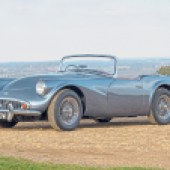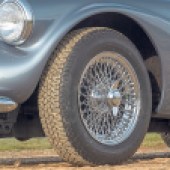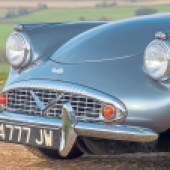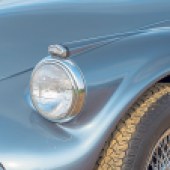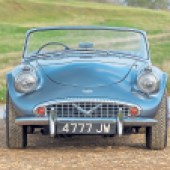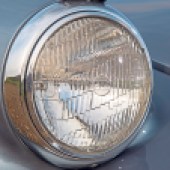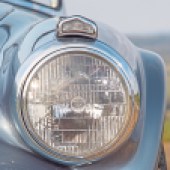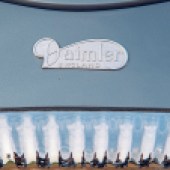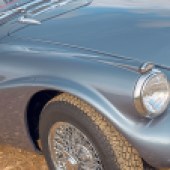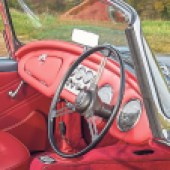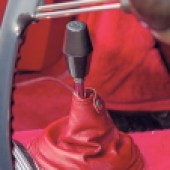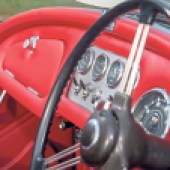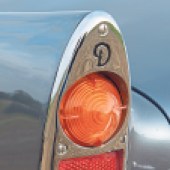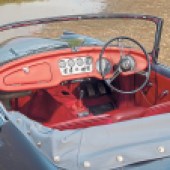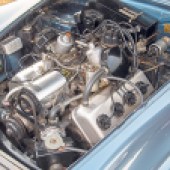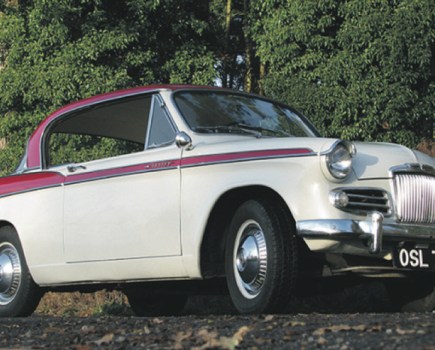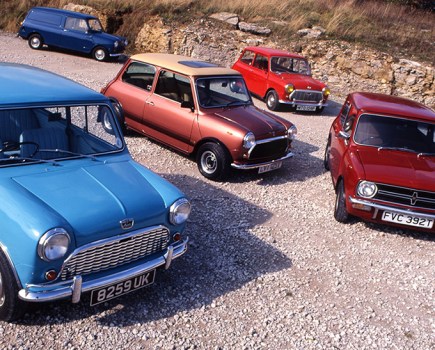The Daimler SP250 offers individuality and exclusivity – but does that make it a sensible choice today? Here’s everything you need to know
Words: Paul Guinness
Just a year before the company’s takeover by Jaguar, Daimler caused a stir at the 1959 New York Motor Show when it unveiled the SP250 – a brand new V8-engined, glassfibre-bodied sports car.
It was an unusual move for a manufacturer best known for its upmarket saloons and limousines, but Daimler seemed confident of success. In the end, however, the SP250 was short-lived, ceasing production in 1964 after a total run of just 2,654 cars.
Although its sports car focus was understandably on the new E-type, Jaguar didn’t neglect the SP250 it had inherited. April 1961 saw a revised version – known as the B-Spec – bringing many important upgrades, mostly to reduce the original’s chassis flex. Modifications included a three-piece hoop under the dashboard, connected through the A-posts to the sill beams, which strengthened the scuttle as well as making the (now adjustable) steering column more rigid.
B-posts were also added for extra strength between the rear outriggers and the body. And to give the car a smoother look, full-width front and rear bumpers with over-riders were introduced.
The C-Spec SP250 then arrived in February 1963, although its improvements were rather minor, including fitment of a heater/demister unit as standard. All versions featured Daimler’s superb 2.5-litre V8, pushing out a generous 140bhp to give a top speed of 120mph-plus, with a 0-60 time of just over nine seconds ensuring the car had a sprightly feel.
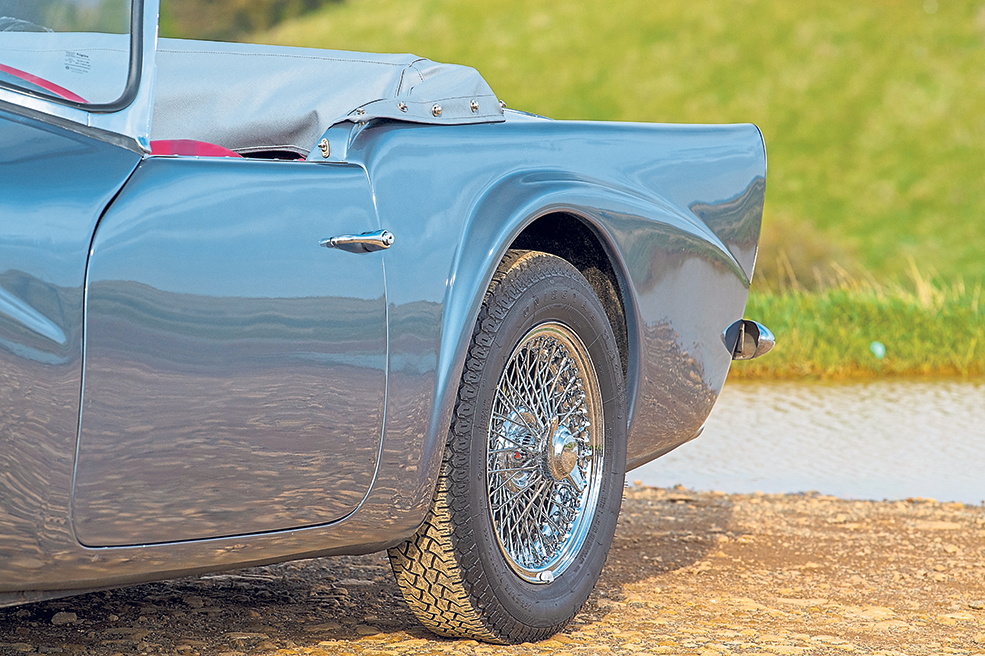
Bodywork
Just because the SP250 comes with rust-free glassfibre bodywork doesn’t mean you can forget about potential problems. For what was a relatively early example of a GRP-bodied car, however, the Daimler was well-built and strong, with most of today’s issues likely to be cosmetic rather than structural. It’s important to make sure the car you’re inspecting shows no signs of previous accident damage, so check for obvious rippling of the bodywork, poorly aligned panels and excessive panel gaps. You should also check for damage to the inner wing areas, where previous repairs might not be as neatly finished.
Even a car that’s suffered no accident damage can have problems, notably crazing that occurs in areas of stress – particularly around the door, boot and bonnet hinges, door handles and so on. Early cars built prior to the chassis-strengthening measures introduced by Jaguar are particularly prone to this kind of damage. You should also check the bonnet, which can not only crack due to flexing but can also be weak around its all-important front-mounted safety catch.
Of more structural concern is the Daimler’s chassis, with the tubular crossmember that holds the mountings for the front body sections and steering box being vulnerable to rot. The front suspension turrets also attract corrosion – and if it’s severe and they need replacing, it’s a body-off job. You should also look for cracks in the mounting brackets for the lower wishbones, something that might be difficult to spot if the chassis is caked with dirt.
The extra bracing for the B-posts and the stiffening beams underneath the door apertures introduced on B-Spec cars are susceptible to rot and can be fiddly to replace. And on all SP250s there’s a substantial crossmember immediately behind the back axle, with two supplementary strengthening beams behind that – areas that can again attract corrosion. Replacement sections are readily available, but you’ll need to factor in the cost (and hassle).
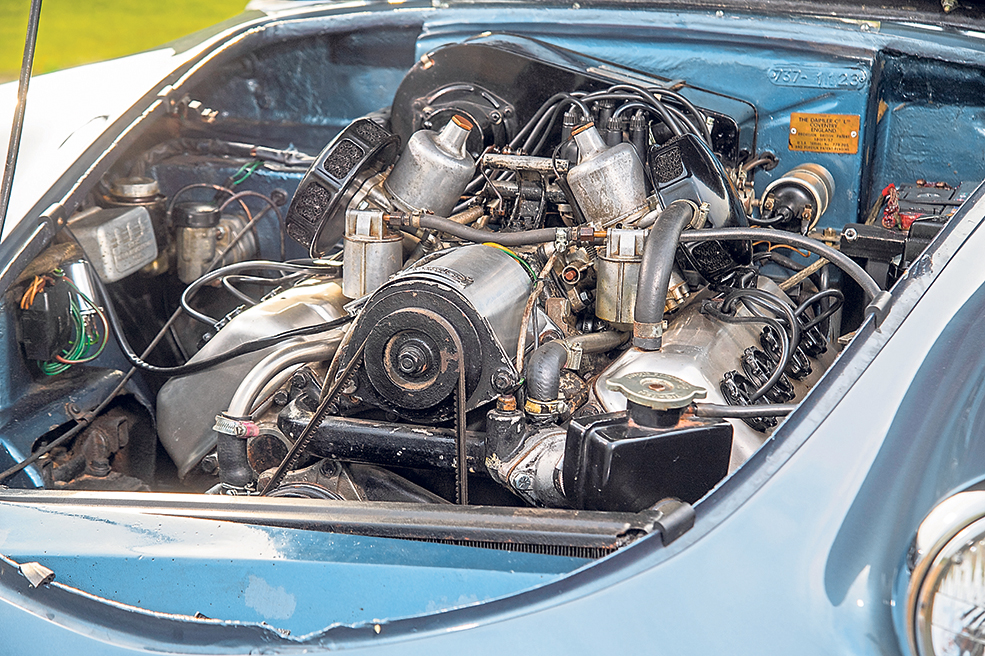
Engine and transmission
Daimler’s 2.5-litre V8 is a robust unit that should easily see 100,000 miles when well-maintained, although some problems can occur. Worn valve guides are fairly common, usually sounding like excessively noisy tappets. It’s also not unusual to find issues with the cylinder head water passages caused by over-pressurisation, so keep an eye out for signs of coolant leaks.
Less common problems include sticking exhaust valves and main bearing failure; if replacement main bearing shells are needed, the front bearing is very inaccessible and will require engine-out attention.
Interestingly, piston failure is far rarer in the SP250 than it is in the Daimler 2.5-Litre saloon that uses the same engine. Finally, check the oil pressure of the car you’re thinking of buying, which should read at least 15psi when idling and around 40psi in top gear at 40mph.
The SP250’s four-speed manual gearbox is based around a Triumph design and arguably isn’t strong enough for the amount of power on offer. It will be reliable when treated with care, but any previously abused car can show signs of transmission wear.
On your test drive, check that the gears all engage easily (remember there’s no synchromesh on first) and make sure there are no signs of clutch slip. Some manual models have been retrofitted with overdrive, so ensure this is fully functioning.
If you’re buying an automatic SP250, you’ll find the three-speed Borg Warner unit to be reliable and capable of very high mileages, but again check for signs of any gear slippage under load and make sure the changes are smooth up and down the box.
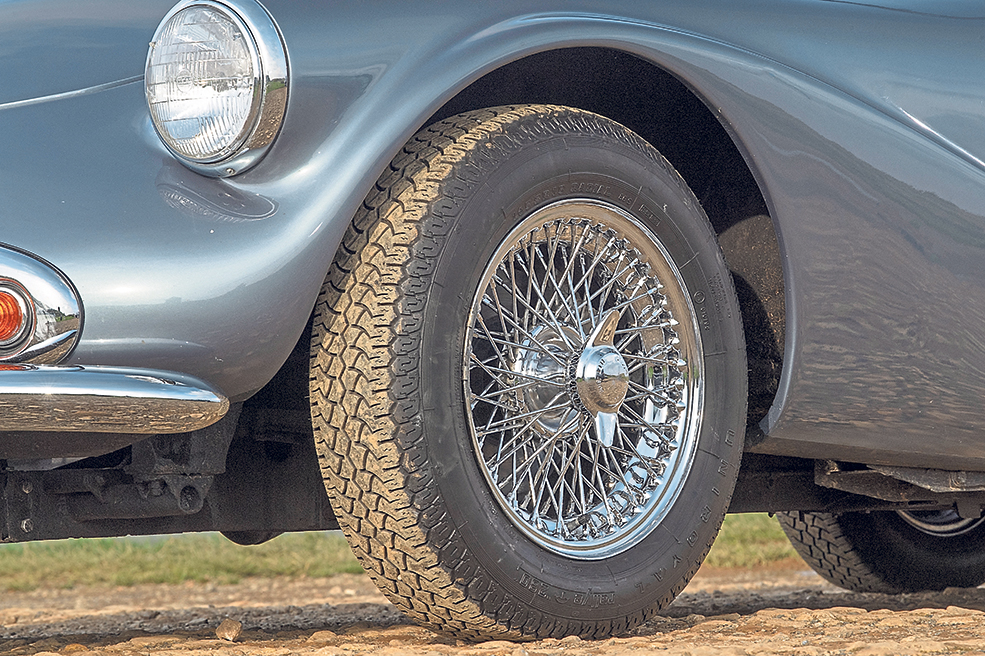
Suspension, steering and brakes
The back axle is robust on B- and C-Spec cars, with only the earliest SP250s being prone to problems with the crownwheel and pinion assembly. The suspension (independent up front) should give few problems, although lack of maintenance and regular greasing can cause the bottom trunnions to wear excessively. Sagging springs aren’t uncommon on an unrestored car, so check that it ‘sits’ squarely and has all-round ground clearance of about six inches.
Even when new, the SP250’s steering was considered to be fairly heavy, and that’s certainly not changed with the passing of time. Many survivors have been retrofitted with rack and pinion steering, usually employing an ex-Triumph 2500 unit. If modifications like this have been carried out, make sure the job looks professional and that the steering feels sharp and precise.
The all-disc braking system of the Daimler is also dependable, as well as being highly effective at bringing this lightweight sportster to a rapid halt. The footbrake system is easy to work on and parts are readily available. The main area likely to give problems is the fly-off handbrake, which is excellent when working properly but can be prone to wear and seizing.
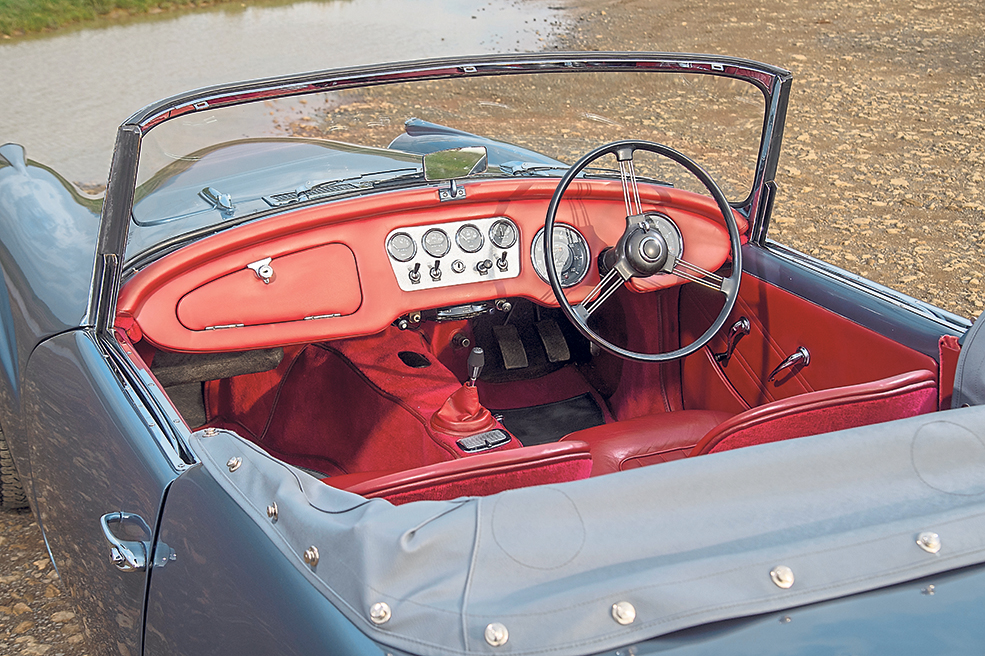
Interior and trim
As well as checking the SP250’s glassfibre bodywork for signs of crazing and cracking, you should carefully inspect the paint finish – particularly if the car you’re buying is described as immaculate.
Look for blemishes and mismatched panels, as professionally respraying any gel-coated glassfibre classic will be an expensive undertaking. While you’re at it, you should also inspect the brightwork for the usual problems of pitting, peeling chrome and so on.
If the Daimler you’re buying needs some attention to its trim, don’t despair. Specialists like Bryan Purves can help with replacement items, from complete hoods (in vinyl or mohair) and hood frames through to replacement seat covers, door panels, gearstick gaiters and so on.
Obviously, it makes sense to draw up a list of what you need for the car you’re buying and how much it’s all likely to cost before you start haggling over the purchase price.
Daimler SP250: our verdict
For anyone in the market for a classic sports car of the 1960s, the SP250 might not be the most obvious choice. Its styling still divides opinion, its glassfibre bodywork isn’t everyone’s ideal choice, and its relative lack of commercial success means it’s not as aspirational as, say, the legendary Jaguar E-type.
What you get with the Daimler SP250, however, is individuality – as well as all the advantages of V8 power under that distinctive bonnet, an engine that offers real flexibility, strong performance and a glorious soundtrack. It helps to make the SP250 an absolute pleasure on the right kind of road, as does the car’s predictable but entertaining handling.
Daimler SP250 timeline
1959
Daimler SP250 launched as the Daimler Dart at the New York Motor Show.
Name change from Dart to SP250 comes to avoid trademark crossover with the Dodge Dart.
M1 motorway opens; Befordshire Police use SP250s as patrol cars. Metropolitan Police also use the model in three-speed automatic guise.
1960
Jaguar buys Daimler and soon introduces a B-spec model with a strengthened chassis and adjustable steering column
A hard-topped version of the SP250 achieves a recorded 123.7mph top speed and 8.9-second 0-60mph time at the hands of The Motor magazine
1961
Work begins on the Daimler SP252, a proposed replacement for the SP250. The car was eventually considered unviable for production as each example would have taken over two times longer to make than an equivalent Jaguar E-type.
1962
Ogle Design shows a SP250 coupe concept named SX250 at the Earls Court Motor Show. The design would later go on to be used for the Reliant Scimitar.
1963
C-spec car arrives with additions including heater and demister, cigarette lighter and trickle charger input.
1964
Production ends with 2,654 examples made over five years.





